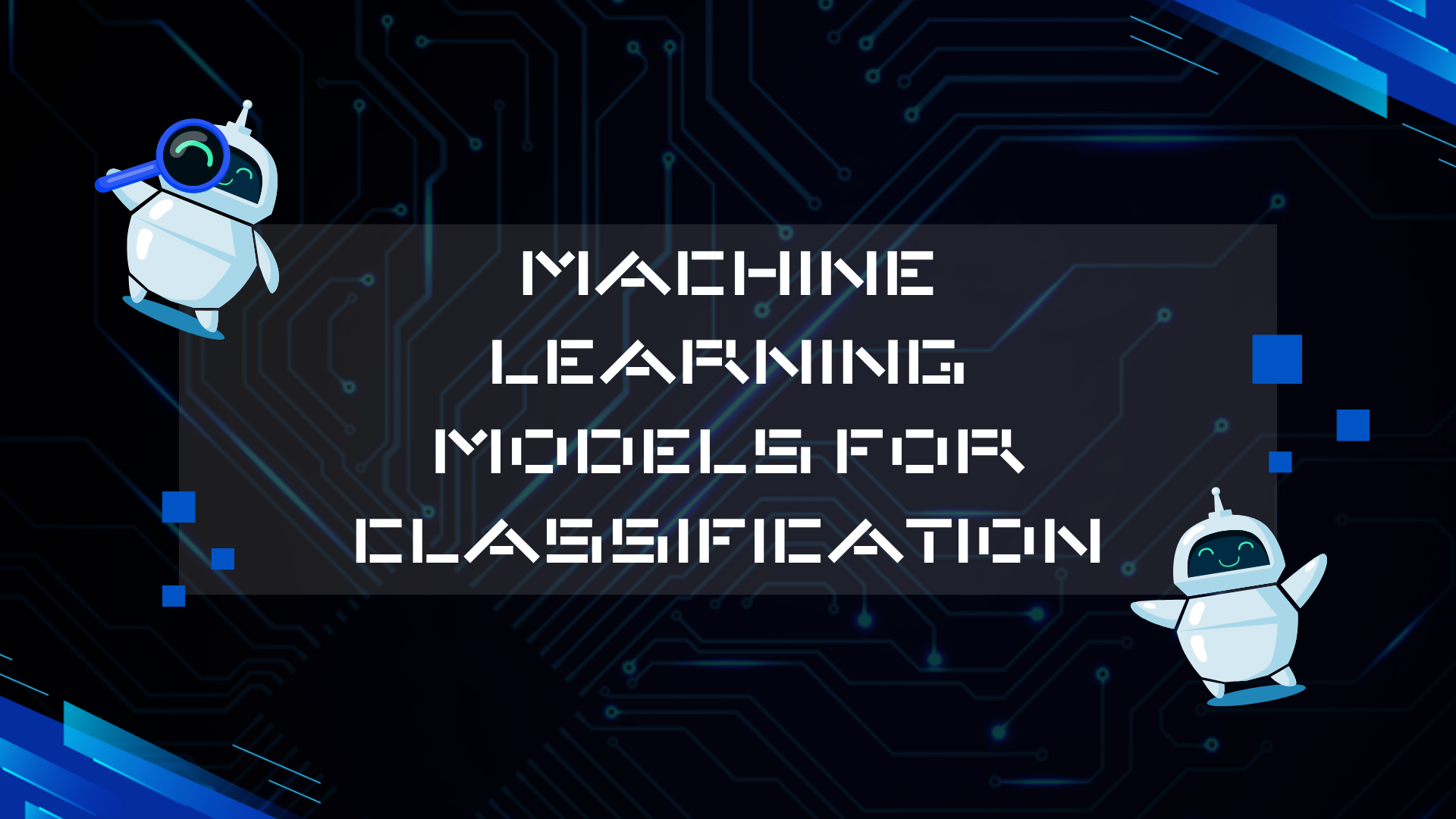Machine Learning Models for Classification

Classification is a cornerstone of machine learning, enabling systems to categorize data into predefined classes based on patterns learned from training data.
This article explores the fundamental concepts, algorithms, and advanced techniques in classification, providing a comprehensive guide for practitioners and enthusiasts. From basic binary classifiers to cutting-edge ensemble methods, we delve into the mechanics, applications, and challenges of these models.
Types of Learners in Classification
Machine learning classifiers fall into two categories: eager learners and lazy learners.
Eager learners, like Logistic Regression, Support Vector Machines (SVM), and Decision Trees, construct a generalized model during training. They prioritize fast prediction times but require significant upfront computational resources. For example, SVM identifies a hyperplane to separate classes during training, which is later used to classify new data.
Lazy learners, such as K-Nearest Neighbors (K-NN), delay model construction until prediction time. They memorize training data and compute similarities during inference, making them slower for large datasets but adaptable to new patterns.
Classification Tasks
1. Binary Classification
Predicts between two mutually exclusive classes (e.g., spam vs. non-spam). Algorithms like Logistic Regression and SVM excel here due to their simplicity and efficiency.
2. Multi-Class Classification
Assigns data to one of three or more classes (e.g., digit recognition in images). Native binary algorithms like SVM and Logistic Regression require adaptations:
- One-vs-One: Trains
N(N−1)2\frac{N(N-1)}{2}
classifiers for
NN
classes, using majority voting. - One-vs-Rest: Trains
NN
binary classifiers, each distinguishing one class from all others.
3. Imbalanced Classification
Addresses skewed class distributions (e.g., fraud detection). Techniques include:
- Resampling: Oversampling minority classes (e.g., SMOTE) or undersampling majority classes.
- Cost-sensitive learning: Penalizing misclassifications of rare classes more heavily.
Key Classification Algorithms
1. Logistic Regression
Models probabilities using the sigmoid function. Ideal for binary tasks and interpretable outcomes (e.g., predicting loan defaults).
from sklearn.linear_model import LogisticRegression
model = LogisticRegression()
model.fit(X_train, y_train)
2. Support Vector Machines (SVM)
Finds optimal hyperplanes using kernel tricks (e.g., linear, RBF) to handle non-linear data. Effective in high-dimensional spaces.
from sklearn.svm import SVC
model = SVC(kernel='rbf')
model.fit(X_train, y_train)
3. Decision Trees and Random Forest
- Decision Trees: Split data using feature thresholds, but prone to overfitting.
- Random Forest: Ensemble of decorrelated trees via bagging, improving robustness and accuracy.
4. K-Nearest Neighbors (K-NN)
Classifies based on majority vote from
kk
closest training examples. Sensitive to feature scaling and
kk-value selection.
5. Naive Bayes
Applies Bayes’ theorem with feature independence assumptions. Fast and suitable for text classification (e.g., sentiment analysis).
6. Gradient Boosting Machines (e.g., XGBoost)
Sequentially corrects errors from prior models. Known for high accuracy and regularization, often winning machine learning competitions.
Advanced Techniques
Deep Learning for Classification
Neural networks, particularly Convolutional Neural Networks (CNNs) and Transformers, excel in complex tasks like image and text classification. Techniques include:
- Transfer learning: Fine-tuning pre-trained models (e.g., BERT, ResNet).
- Attention mechanisms: Focusing on relevant features in sequential data.
Ensemble Methods
Combine predictions from multiple models to enhance accuracy.
| Method | Description | Use Case |
|---|---|---|
| Bagging | Reduces variance (e.g., Random Forest) | High-dimensional data |
| Boosting | Reduces bias (e.g., AdaBoost, XGBoost) | Imbalanced datasets |
| Stacking | Meta-model learns from base classifiers | Heterogeneous models |
Explainable AI (XAI)
Improves transparency of black-box models.
- SHAP: Quantifies feature importance for individual predictions.
- LIME: Approximates model behavior locally to explain predictions.
Model Evaluation and Selection
Metrics
- Accuracy: Overall correctness of predictions (can be misleading with imbalanced data).
- Precision / Recall: Balance between false positives and false negatives.
- F1-Score: Harmonic mean of precision and recall.
- ROC-AUC: Measures separability between classes.
Cross-Validation
Techniques like k-fold cross-validation prevent overfitting by rotating training and validation sets.
Hyperparameter Tuning
Improve model performance via:
- Grid Search
- Random Search
- Bayesian Optimization
Real-World Applications
- Healthcare: Diagnosing diseases from medical images using CNNs.
- Finance: Credit scoring with Logistic Regression or Gradient Boosting.
- Retail: Customer segmentation followed by classification for personalized marketing.
- Cybersecurity: Anomaly detection in network traffic using SVM or Random Forest.
Challenges and Future Directions
- Data Quality: Managing noise, missing values, and label errors.
- Scalability: Training efficiently on large-scale datasets.
- Ethical AI: Addressing bias in sensitive applications like hiring or policing.
Emerging trends include AutoML for automated model selection and federated learning for privacy-preserving distributed training.
Conclusion
Classification remains a foundational component of modern machine learning, driving innovation across industries.
With a wide array of algorithms, tools, and evaluation strategies available, selecting the right approach requires an understanding of the data, the problem context, and the specific performance goals. As challenges like scalability and fairness continue to evolve, so too will the techniques we use.
Embracing both established methods and emerging advancements empowers practitioners to build accurate, efficient, and responsible classification systems for real-world impact.